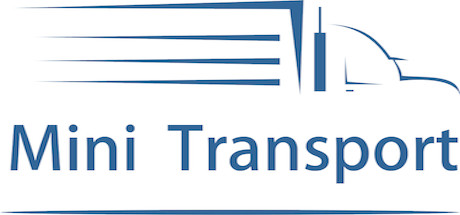Mini Transport Mac OS
Mini Transport Mac OS
Open Transport was the name given by Apple Inc. To its implementation of the Unix-originated System V STREAMS networking stack.Based on code licensed from Mentat's Portable Streams product, Open Transport was built to provide the classic Mac OS with a modern TCP/IP implementation, replacing MacTCP. The Mac mini doesn’t get upgraded often, but when it does, it makes an impact well out of proportion to its trim dimensions. The 2018 Mac mini was a PCMag Editors’ Choice pick for its pep. The Mac Mini I’m rescuing is a mid-2011 with i5-2415M, 2GB RAM and 500GB HDD, running macOS High Sierra (version 10.13). It’s dreadfully slow. The goal is to use this machine as a general purpose computer in a classroom for high school students. In addition to changing the operating system from macOS to Linux, the RAM will be.
Is your Mac up to date with the latest version of the Mac operating system? Is it using the version required by a product that you want to use with your Mac? Which versions are earlier (older) or later (newer, more recent)? To find out, learn which version is installed now.
If your macOS isn't up to date, you may be able to update to a later version.
Which macOS version is installed?
From the Apple menu in the corner of your screen, choose About This Mac. You should see the macOS name, such as macOS Big Sur, followed by its version number. If you need to know the build number as well, click the version number to see it.
Which macOS version is the latest?

These are all Mac operating systems, starting with the most recent. When a major new macOS is released, it gets a new name, such as macOS Big Sur. As updates that change the macOS version number become available, this article is updated to show the latest version of that macOS.
If your Mac is using an earlier version of any Mac operating system, you should install the latest Apple software updates, which can include important security updates and updates for the apps that are installed by macOS, such as Safari, Books, Messages, Mail, Music, Calendar, and Photos.
Mac Os Catalina
| macOS | Latest version |
|---|---|
| macOS Big Sur | 11.3 |
| macOS Catalina | 10.15.7 |
| macOS Mojave | 10.14.6 |
| macOS High Sierra | 10.13.6 |
| macOS Sierra | 10.12.6 |
| OS X El Capitan | 10.11.6 |
| OS X Yosemite | 10.10.5 |
| OS X Mavericks | 10.9.5 |
| OS X Mountain Lion | 10.8.5 |
| OS X Lion | 10.7.5 |
| Mac OS X Snow Leopard | 10.6.8 |
| Mac OS X Leopard | 10.5.8 |
| Mac OS X Tiger | 10.4.11 |
| Mac OS X Panther | 10.3.9 |
| Mac OS X Jaguar | 10.2.8 |
| Mac OS X Puma | 10.1.5 |
| Mac OS X Cheetah | 10.0.4 |
Can my Mac Mini run higher version OS software?
Mini Os Live
I have a MM 4.1 (build 201) that is running 10.6. It is the server model with two hard disks in it, no DVD. It has been running as a server for a long time. I now want to use it as a ‘normal’ computer. My questions are:
- What OS it can run?
- And can I upgrade straight away from 10.6 to whatever version of software it can run?
- Is 10.7 still available? If not can I jump to the latest OS it can run or does it need to be an incremental upgrade?
- Would 4 GB of RAM memory be enough for a higher OS? And if not, can it be upgraded to more and how much RAM can it handle?
FYI, the Hardware Overview:
Model Name: Mac mini
Model Identifier: Macmini4,1
Processor Name: Intel Core 2 Duo
Mini Transport Mac Os 11
Processor Speed: 2.66 GHz
Number Of Processors: 1
Total Number Of Cores:2
L2 Cache: 3 MB
Memory: 4 GB
Bus Speed: 1.07 GHz
Boot ROM Version: MM41.0042.B00
SMC Version (system): 1.65f2
Hardware UUID: 60B4EC03-B9BC-55D9-B652-978F302F0C5F
Thanks.
Posted on Apr 21, 2018 1:49 AM
Mini Transport Mac OS
